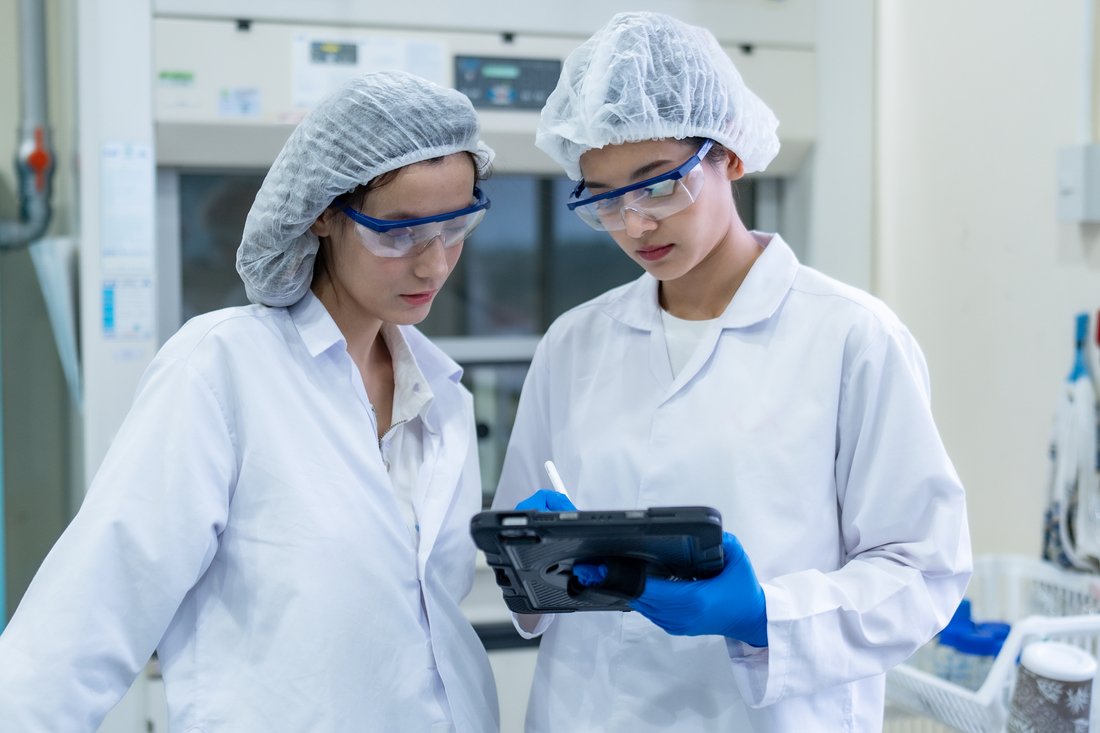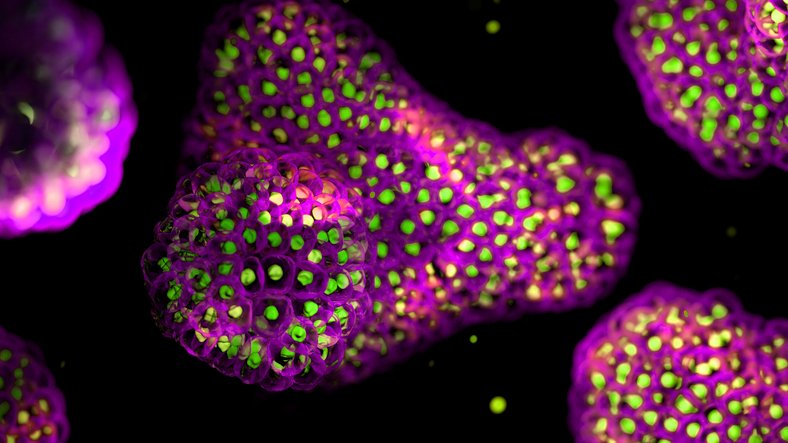New research in mice has shown that food-induced anaphylaxis is driven by distinct immune pathways involving inflammatory lipids called leukotrienes. The findings, published across two separate studies in Science, identify genetic and cellular factors that influence susceptibility to severe allergic reactions and point to potential use of the FDA-approved asthma therapy, Zileuton, to block this life-threatening response.
In one reported study (“Cysteinyl leukotrienes stimulate gut absorption of food allergens to promote anaphylaxis in mice,”) Laura Hoyt, PhD, at Yale University School of Medicine, and colleagues, investigated why some mice develop severe allergic reactions to food when eaten, while others don’t, even though both groups produce similar levels of allergy-related IgE antibodies. “Food-specific immunoglobulin E (IgE) is the central mediator of anaphylactic reactions,” they wrote, “… however, some people with IgE to food allergens can ingest these foods without having symptoms, which is called “sensitized tolerance” or “asymptomatic sensitization.””
Through their work, the team linked this difference to genetic variants in an enzyme dipeptidase 1 (DPEP1), one function of which is to break down an inflammatory molecule leukotriene D4 (LTD4), which belongs to a group of inflammatory lipids known as cysteinyl leukotrienes (CysLTs).
The investigators found that mice resistant to anaphylaxis had a more active version of DPEP1, allowing them to degrade LTD4 more efficiently in the small intestine. In contrast, susceptible mice had less active DPEP1, leading to higher LTD4 levels. “In a forward genetic screen, resistance was correlated with dipeptidase 1 (Dpep1) variants,” the team stated. “We found that oral anaphylaxis–susceptible mice had elevated CysLTs in the gut, suggesting impaired DPEP1 enzymatic activity.” This excess LTD4, the team suggests, enhances the movement of allergens from the gut lumen into the tissue, triggering anaphylactic reactions.
The discovery of the new pathway came after a yearslong forward genetic screen, a process whereby scientists breed generations of mice to narrow down the specific genes responsible for biological differences, such as susceptibility to food allergy. Once the scientists found that the DPEP1 gene controlled leukotrienes in the gut—inflammatory molecules already targeted by asthma drugs—they tested Zileuton, an FDA-approved drug that blocks their production.
By using the asthma drug Zileuton to block the pathway involving this gene, the scientists nearly eliminated allergic responses in mice that were previously highly susceptible to food-induced anaphylaxis. To test this. the mice were given peanut extract orally shortly after receiving Zileuton, while the team monitored for symptoms. “… inhibition of leukotriene synthesis with Zileuton reduced allergen absorption and prevented anaphylaxis after oral challenge in susceptible mice,” Hoyt and team reported. “Our work indicates that the intestinal barrier can protect sensitized individuals from experiencing allergic symptoms upon food ingestion, which could be achieved by reducing gut CysLTs with Zileuton…This suggests that blocking leukotriene synthesis could be a treatment for food allergies.”
Co-senior study author Stephanie Eisenbarth, MD, PhD, director of the Center for Human Immunobiology and chief of the Division of Allergy and Immunology at Northwestern University Feinberg School of Medicine, commented, “It was actually shocking how well Zileuton worked.”
“After treatment with Zileuton, 95% of the mice showed almost no symptoms of anaphylaxis,” added co-senior author Adam Williams, MD, PhD, an associate professor of medicine (allergy and immunology) at Northwestern University Feinberg School of Medicine. “The treatment reversed their risk from 95% susceptible to 95% protected.”
Food allergies are on the rise and affect more than 33 million people in the U.S.—nearly one in 10 people, the team noted. Yet predicting an allergic individual’s risk of anaphylaxis and preventing severe reactions from accidental exposure remains challenging.
Currently, there is no cure for food allergies, and there are only two FDA-approved treatments for certain food allergies. One is an oral immunotherapy for peanut allergy, which doesn’t work for everyone and can itself trigger anaphylaxis. The other is a costly injection (omalizumab) that also isn’t effective for all allergic patients.
Zileuton could offer a new approach, taken as a simple pill that temporarily shields allergic individuals by blocking the body’s anaphylactic pathway before it activates, the team suggests. “This is a totally different, out-of-the-box approach to treat food allergy, unlike anything we’ve tried before,” Williams said. “We’ve seen tragic, even fatal reactions from hidden ingredients like ground peanuts in a sauce. For parents sending their child to a birthday party, or for anyone flying where they can’t control what’s being served, this could be a powerful protective drug.”
The Northwestern team launched a small early-stage clinical trial in July to test whether blocking this newly identified pathway with Zileuton in humans is as effective as it was in mice.
The study findings also shed light on a long-standing puzzle in allergy medicine, which is why some individuals test positive for food allergens but experience no symptoms when they eat the food. “Let’s say you’re told you’re allergic to peanuts based on a blood test, but you’ve eaten peanuts your whole life without any problems,” Eisenbarth said. “This pathway we discovered may be one explanation for why some of those people are protected.”
That group has been a challenge for clinicians and a source of stress for patients, Eisenbarth added, because current diagnostic tests only estimate allergy risk, not tolerance. “Our findings open a whole new area for future research into how people develop food allergies in the first place, and why some react while others don’t.”
The breakthrough wouldn’t have been possible without long-term investment in scientific research, Eisenbarth said. “If you’d asked me five or six years ago to guess the pathway that would lead to this discovery, I never would have picked this gene or the leukotriene molecules,” she said.
In the other report in Science (“Intestinal mast cell–derived leukotrienes mediate the anaphylactic response to ingested antigens,”) Nathaniel Bachtel, at Yale University School of Medicine, and colleagues, studied how allergen exposure through the mouth or gut influences allergic reactions in mice.
They found that CysLTs play a critical role specifically in oral anaphylaxis but not in systemic reactions. “Cysteinyl leukotrienes were required for anaphylaxis after gastrointestinal exposure to allergens, but not to systemic allergens,” they wrote. Blocking CysLT production using Zileuton reduced anaphylaxis after oral allergen exposure, yet had no effect when allergens were introduced systemically. “Mice genetically deficient in cysteinyl leukotriene synthesis, or those treated with the arachidonate 5-lipoxygenase (aLOX5) antagonist Zileuton, were protected from oral antigen–induced responses, whereas those elicited by intravenous injection were unaltered,” the team stated.
This protective effect was linked to a particular subset of mucosal mast cells in the intestine that produce leukotrienes in response to allergens. Connective tissue mast cells, found in deeper tissues like the skin or lungs, in contrast primarily release histamine and are not involved in this leukotriene-driven pathway. According to the authors, their findings highlight that distinct mast cell populations and their chemical mediators drive different forms of allergic responses, with mucosal mast cells playing a central role in food-induced anaphylaxis.
“We propose that cysteinyl leukotrienes have dual functions in food allergy in mice by promoting mucosal mast cell expansion and by stimulating acute sensitization to oral anaphylaxis through signaling to epithelial cells, neurons, and group 2 innate lymphoid cells (ILC2s),” they noted.
Other conditions capable of driving leukotriene excess in the intestines or ILC2 activation may act as cofactors toward the development of severe anaphylactic responses to foods, they stated. “Thus, local intestinal responses may be acutely targetable as a therapeutic strategy to prevent anaphylaxis in severely food-allergic individuals.”
In their paper, Bachtel and colleagues also noted, “Hoyt et al. reported that a mutation affecting dipeptidase 1 (DPEP1), an epithelial brush-border enzyme that converts LTD4 to LTE4, underlies the susceptibility of the food allergy–prone C3H/HeJ mouse strain.” In combination with their own newly reported results, the Bachtel team concluded, “… these findings suggest that DPEP1 dysfunction may act to enhance the effects of intestinal mast cell degranulation at the epithelial interface. Together, these findings reveal a critical role of leukotrienes in anaphylactic reaction to ingested allergens.”
In a related perspective, Tamara Haque, PhD, and Mark Kaplan, PhD, at Indiana University School of Medicine, suggested that the reports by Hoyt et al. and Bahtel et al.—which indicate that cysteinyl leukotrienes are important drivers of oral, IgE-mediated anaphylaxis—offer “…hope of a potential therapeutic approach for treating food allergy.” Haque and Kaplan wrote, “Because Hoyt et al. and Bachtel et al. show that Zileuton can inhibit orally induced anaphylaxis, future translational studies are warranted that examine the effectiveness of Zileuton in preventing anaphylactic food allergic reactions in humans.”
The post Asthma Drug Prevents Food-Related Anaphylaxis in Allergic Mice appeared first on GEN – Genetic Engineering and Biotechnology News.




